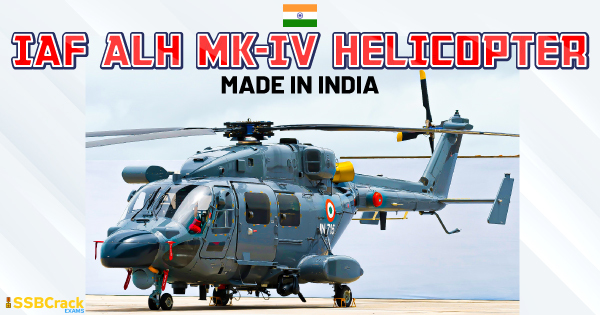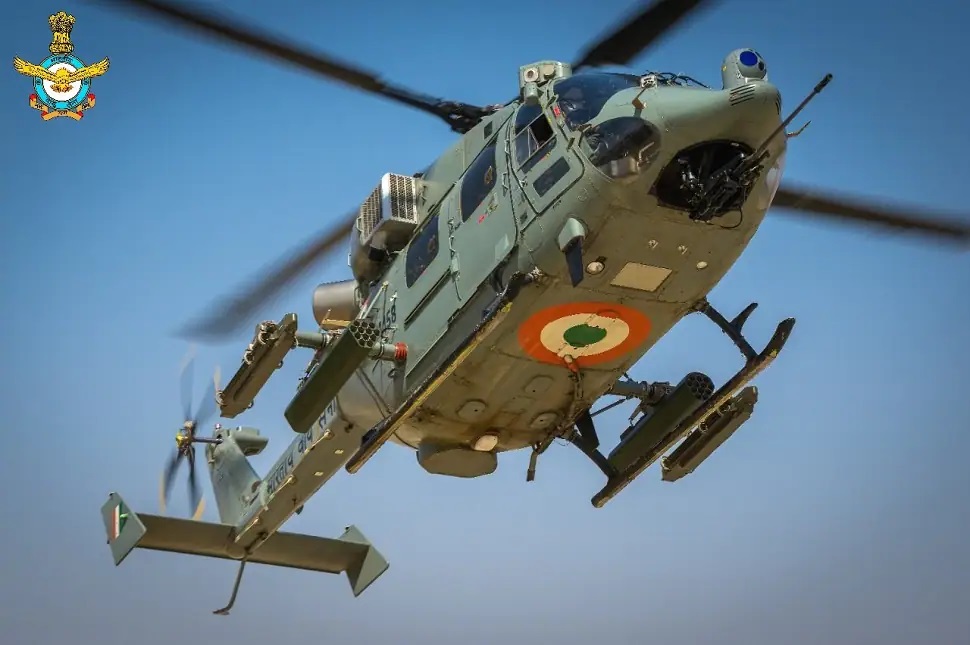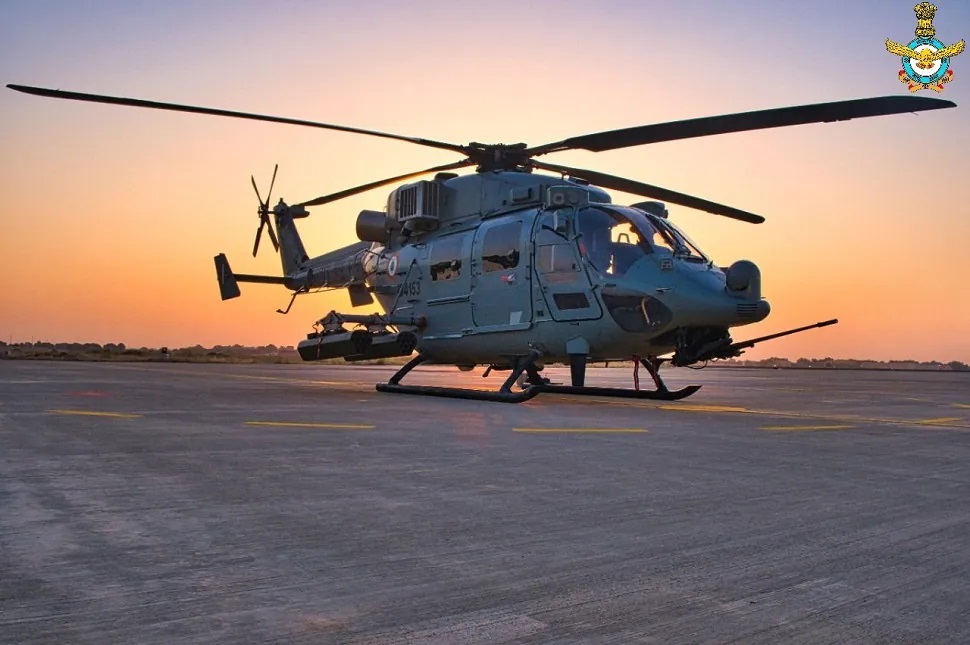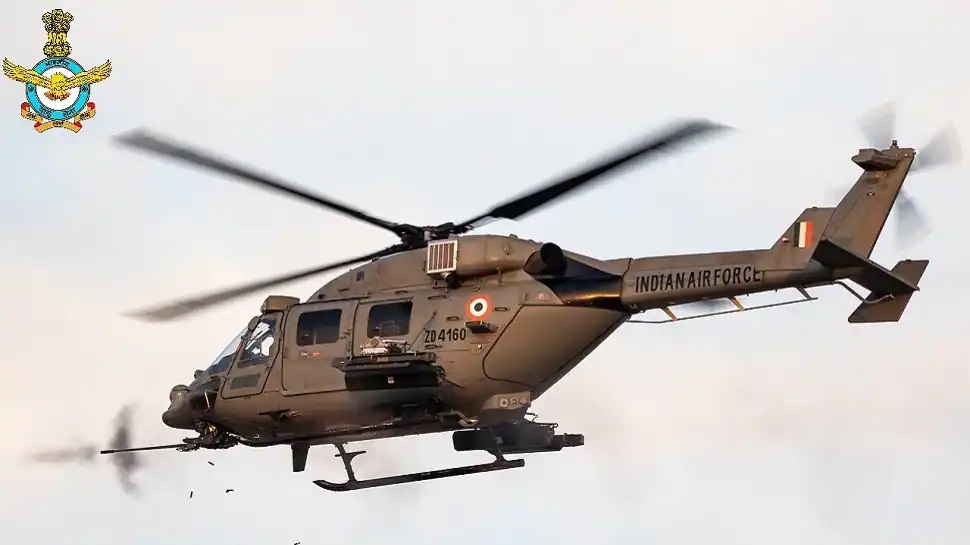The Advanced Light Helicopter (ALH-DHRUV), which was designed and produced domestically, is a twin-engine, multi-role, multi-mission next-generation helicopter that weighs 5.5 tonnes. Both a skid version and a wheeled version of the fundamental helicopter are produced. Dhruv has been “type-certified” for both military and civil operations by the Directorate General of Civil Aviation and the Centre for Military Airworthiness Certification (CEMILAC) (DGCA).
The utility military variant’s certification was finished in 2002, while the civil variant’s certification was finished in 2004. Beginning in 2001–2002, production series helicopter deliveries were made. By March 2017, 228 helicopters have been constructed overall, 216 of which were designated for the Indian Armed Forces.
The four main Dhruv variations are designated as Dhruv Mk-I, Mk-II, Mk-III, and Mk-IV.
Mk.1
The original design included Turbomeca TM 333-2B2 turboshaft engines and a traditional cockpit with mechanical instrumentation. 56 have been given to the Indian military in total. Production started in 2001.
Mk.2
Except for having the more recent HAL-IAI glass cockpit, the Mk.1 is comparable. The Indian military has received a total of twenty. Production started in 2007.
Mk.3
A better model featuring Shakti-1H engines, a new electronic warfare (EW) suite and warning systems, autonomous chaff and flare dispensers, and an enhanced vibration control system. Induction into service of the first batch took place in 2012.
Mk.4
Mk.4 is additionally referred to as Dhruv-WSI (Weapons System Integrated) or HAL Rudra.
HAL Rudra
Hindustan Aeronautics Limited, an Indian aerospace manufacturer, created the HAL Rudra, also known as ALH-WSI, as an armed variant of the HAL Dhruv utility helicopter (HAL).
The HAL Light Combat Helicopter (LCH), a larger attack helicopter created from the Dhruv, and the Rudra were both developed concurrently. The Rudra was created without making significant alterations to the Dhruv in order to build an armed indigenous helicopter more quickly than the LCH programme could. The Rudra Mark IV is equipped with a variety of armaments, while the Mark III variant just had the sensors and mission equipment. A 20 mm turret cannon, 70 mm rocket pods, anti-tank guided missiles, and air-to-air missiles are included in the armed versions of the Rudra, which also has forward-looking infrared (FLIR), day-and-night optical cameras, and a Thermal Imaging Sights Interface. Beginning in December 1998, work on the project began, and the prototype Rudra made its first flight.
The Rudra underwent extensive flight testing between 2011 and 2013, which showed that it had mostly met or exceeded predetermined specifications. The Indian Army, which serves as its main client, received the first two Rudra helicopters in February 2013, the same month that the type received Initial Operational Clearance (IOC). Along with the Indian Army, the Indian Navy and Air Force are also interested in the kind.
This model is equipped with a 20 mm Nexter turret gun from France, 70 mm rockets from Belgium, and Helina anti-tank missiles from MBDA. Armed version for high altitude, close air support, and attack missions.
Armament
- 1 × 20 mm M621 cannon on Nexter THL-20 turret
- 2 × 2 Mistral
- 4 × 12 FZ275 LGR
- 4 × 2 Dhruvastra (User trials completed, induction soon.)
Avionics
- Elbit CoMPASS optoelectronic suite for reconnaissance and target acquisition
- RWS-300 radar warning system or LWS-310 laser warning system
- MAW-300 missile approach warning system
- Saab AB IDAS-3 self-protection suite
- BOP-L ECM dispenser
The HAL Dhruv Mk III’s glass cockpit has been improved, and the Rudra is equipped with integrated sensors, weaponry, and an electronic warfare suite. These sensors include infrared imaging, stabilised day and night cameras, and laser ranging and designating. [7] It contains an electronic warfare self-protection system that is completely incorporated into the glass cockpit thanks to an Integrated Defensive Aids Suite (IDAS) from Saab AB. Radar and missile detectors, an IR jammer, chaff and flare dispensers, and other self-defense equipment are installed on board. Both unarmed and armed duties, including as aerial reconnaissance, troop transport, anti-tank warfare, and close air support, are possible for the helicopter.
The project’s scope was revised in July 2005 to include the integration of more systems as well as a more powerful version of the HAL/Turbomeca Shakti turboshaft engine. After revision, the Rudra program’s cost was estimated to be Rs. 710.29 Cr. in April 2007. At this time, July 2008 was listed as the anticipated completion date. The prototype Rudra made its first flight on August 16, 2007.
The Rudra underwent armament and electro-optical system integration tests in September 2011, which included a last set of weapon fire tests, including those for its 20 mm turret gun. In November 2011, tests of MBDA Mistral air-to-air missiles and 70 mm rockets were also conducted. According to reports, the helicopter met or beat both the payload and performance requirements.
If you liked the article do share it with your friends. If you are preparing for defence exams and SSB Interview, SSBCrackExams is providing a number of courses and study material. Join today and boost up your preparation.
Also Read:
- How To Join IAF Helicopter Training School (HTS)?
- India’s Light Combat Helicopter Has Been Officially Named Prachand, Which Means ‘Fierce’
- IAF To Raise First Light Combat Helicopter Squadron At AFS Jodhpur
- All About Indian Air Force AH-64E Apache Attack Helicopter [Fully Explained]
- Difference Between Apache AH-64 Attack Helicopter VS Mi-35 Attack Helicopter
- List Of Helicopters Used By Indian Navy
- List Of Helicopters Used By The Indian Army
- List Of Helicopters Used By Indian Air Force
- How To Join Indian Army Aviation Corps


























